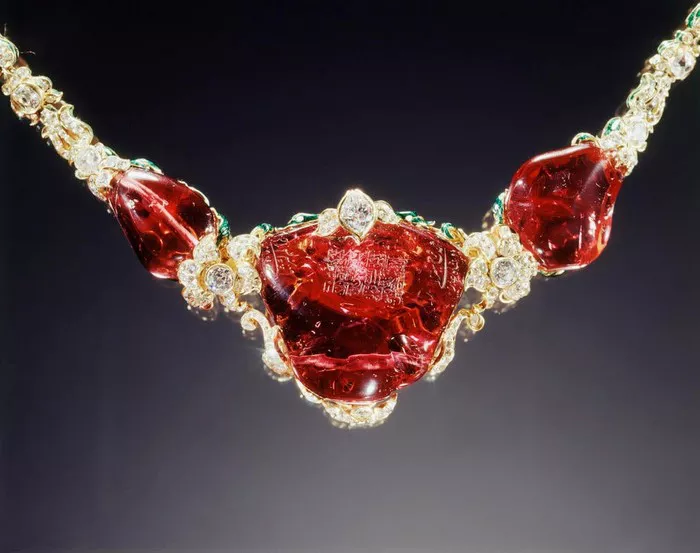Rubies are one of the most prized gemstones in the world, known for their stunning red color and rarity. However, not all rubies are natural; many are synthetic, meaning they are created in a laboratory rather than formed naturally in the earth. This leads to the question: Is synthetic ruby valuable? In this article, we will explore the characteristics of synthetic rubies, their value compared to natural rubies, and factors to consider when determining the value of synthetic rubies.
Understanding Synthetic Rubies
Synthetic rubies are laboratory-created gemstones that have the same chemical composition and crystal structure as natural rubies. They are grown under controlled conditions using a process called flame fusion or the Verneuil process, which involves melting together aluminum oxide (corundum) with chromium, the element responsible for the ruby’s red color.
Synthetic rubies are virtually identical to natural rubies in terms of appearance, hardness, and chemical composition. They exhibit the same vibrant red color and brilliance as natural rubies, making them an attractive alternative for those seeking a more affordable option.
Is Synthetic Ruby Valuable?
The value of synthetic rubies depends on a variety of factors, including their size, color, clarity, and overall quality. While synthetic rubies are generally less valuable than natural rubies, they still have value as gemstones and can be used in jewelry and other decorative items.
Here are some factors to consider when determining the value of synthetic rubies:
Color: The color of a synthetic ruby plays a significant role in its value. Synthetic rubies are typically created to mimic the rich, vibrant red color of natural rubies, but they can also be produced in other colors such as pink, orange, or purple. The intensity and saturation of the color, as well as any secondary hues present, can affect the value of a synthetic ruby.
Clarity: Clarity refers to the presence of inclusions or internal flaws within a synthetic ruby. While synthetic rubies are generally free from inclusions, some may still have minor imperfections that can affect their value. Synthetic rubies with excellent clarity and transparency are more valuable than those with visible inclusions or flaws.
Cut: The cut of a synthetic ruby can also impact its value. Well-cut synthetic rubies exhibit optimal brilliance and sparkle, enhancing their overall beauty and desirability. The quality of the cut, including the symmetry, proportions, and polish, can affect the value of a synthetic ruby.
Size: The size of a synthetic ruby is another important factor to consider when determining its value. Larger synthetic rubies are generally more valuable than smaller ones, all else being equal. However, other factors such as color, clarity, and cut also play a significant role in determining the value of a synthetic ruby.
Treatment: Synthetic rubies are often treated to enhance their color and clarity. Common treatments include heat treatment to improve the color and clarity of the ruby, as well as fracture filling to mask any surface imperfections. Treated synthetic rubies are generally less valuable than untreated stones of similar quality.
Comparison with Natural Rubies
While synthetic rubies are less valuable than natural rubies, they offer several advantages in terms of affordability, availability, and consistency. Synthetic rubies are typically more affordable than natural rubies, making them an attractive option for those on a budget. They are also more readily available and can be produced in larger quantities, ensuring a consistent supply for jewelry manufacturers and consumers.
However, despite these advantages, natural rubies are still highly prized for their rarity, beauty, and intrinsic value. Natural rubies are formed deep within the earth over millions of years, making them incredibly rare and valuable. They are often associated with wealth, power, and prestige, and are highly sought after by collectors and connoisseurs.
Factors Affecting the Value of Synthetic Rubies
Several factors can affect the value of synthetic rubies, including:
Color: The color of a synthetic ruby plays a significant role in its value. Synthetic rubies with intense, vibrant red coloration are more valuable than those with lighter or duller hues. The presence of any secondary hues, such as pink or orange, can also affect the value of a synthetic ruby.
Clarity: Clarity refers to the presence of inclusions or internal flaws within a synthetic ruby. Synthetic rubies with excellent clarity and transparency are more valuable than those with visible inclusions or flaws. However, synthetic rubies are typically free from inclusions due to their controlled growth process.
Cut: The cut of a synthetic ruby can also impact its value. Well-cut synthetic rubies exhibit optimal brilliance and sparkle, enhancing their overall beauty and desirability. The quality of the cut, including the symmetry, proportions, and polish, can affect the value of a synthetic ruby.
Size: The size of a synthetic ruby is another important factor to consider when determining its value. Larger synthetic rubies are generally more valuable than smaller ones, all else being equal. However, other factors such as color, clarity, and cut also play a significant role in determining the value of a synthetic ruby.
Treatment: Synthetic rubies are often treated to enhance their color and clarity. Common treatments include heat treatment to improve the color and clarity of the ruby, as well as fracture filling to mask any surface imperfections. Treated synthetic rubies are generally less valuable than untreated stones of similar quality.
Conclusion
In conclusion, synthetic rubies have value as gemstones and can be used in jewelry and other decorative items. While synthetic rubies are less valuable than natural rubies, they offer several advantages in terms of affordability, availability, and consistency. The value of synthetic rubies depends on factors such as color, clarity, cut, size, and treatment. By considering these factors and understanding the characteristics of synthetic rubies, you can make informed decisions when purchasing or selling synthetic ruby jewelry. Whether you prefer natural or synthetic rubies, both types of gemstones offer beauty, durability, and timeless elegance.


